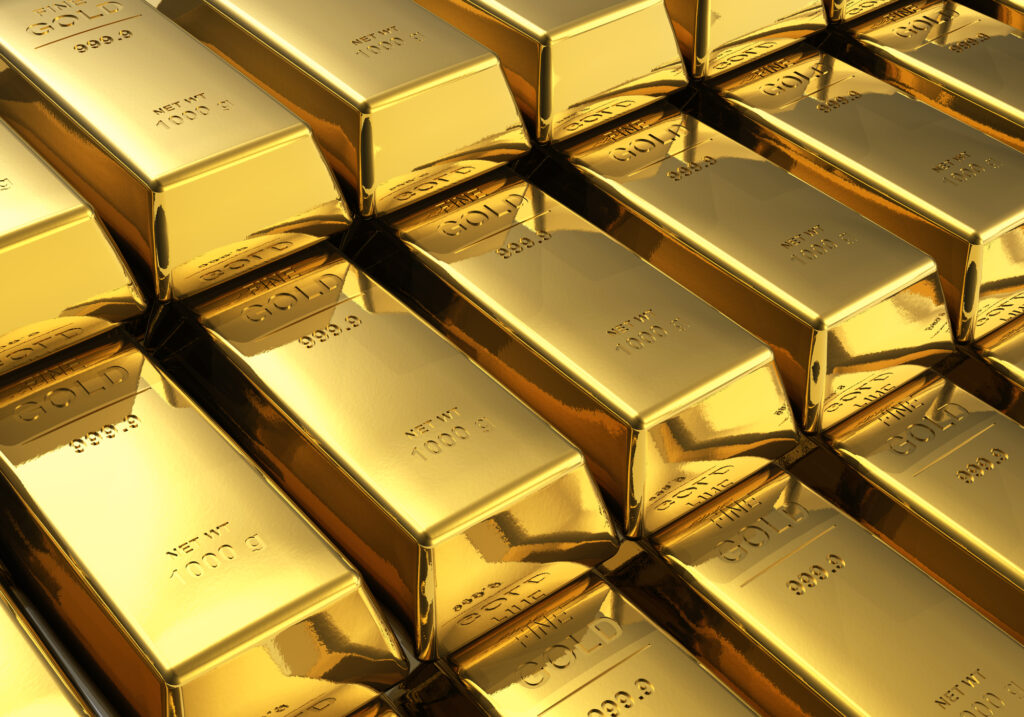Gold has been a valuable commodity for centuries, prized for its beauty and rarity. With the advent of modern technology, it’s now possible to buy gold in many forms, including gold dust. However, not all gold dust is created equal. Some are genuine, while others are merely imitations.
So, is gold dust the same as real gold? The short answer is no. While gold dust contains gold particles, it’s not pure gold.
In this blog, we’ll explore the differences between gold dust and real gold and discuss ways to tell if it’s real. We’ll also look at various methods for measuring gold dust, so you can determine its true value. Whether you’re a seasoned investor or a curious collector, understanding the difference between gold dust and real gold is essential. So, let’s dive in and discover more about this fascinating topic.

What Is Gold Dust & Where Is It Found?
Gold dust is a term used to describe fine particles of gold that have been released from larger pieces of gold ore or gold nuggets through weathering, erosion, or other geological processes. These small particles of gold can be found in rivers, streams, and other bodies of water, as well as in the soil and rock formations where gold deposits are present.
One of the most famous gold rush locations in the world, the Klondike region of the Yukon in Canada, is known for producing gold dust. During the late 19th century, thousands of miners flocked to the area in search of gold. They used sluice boxes and other tools to sift through the gravel and sand of local rivers and streams, often finding gold dust along with larger nuggets.
Other well-known places to find gold dust include the goldfields of California, Alaska, Australia, and South Africa. In these areas, gold dust can be found in rivers, creeks, and alluvial deposits. Gold dust can also be found in the soil and rocks around active or abandoned gold mines.
In addition to natural sources, gold dust can also be created through human activities, such as gold mining and processing. During the refining process, gold ore is crushed and ground into fine particles, which can then be sold as gold dust. However, it’s important to note that this gold dust is not the same as natural gold dust found in rivers and streams, as it has undergone significant processing and may not be as pure.
How Is Gold Dust Connected With Real Gold?
Gold dust is indeed made up of fine particles of real gold. When gold is found in its natural form, such as in nuggets or veins in rocks, it is usually mixed with other minerals and materials. These gold deposits can undergo weathering, erosion, or other geological processes that can break down the rock and release small particles of gold into the surrounding environment.
Over time, these small particles of gold can accumulate in rivers, streams, and other bodies of water, where they can be separated from other minerals and materials by the natural forces of water flow and gravity. This process can result in the formation of alluvial deposits, where gold dust can be found mixed with sand, gravel, and other materials.
So, while gold dust is not pure gold, it does contain small particles of real gold that have been released from larger pieces of gold ore or nuggets. These particles can be separated from other materials through various methods, such as panning or sluicing, and can be used to create jewellery or other gold products.
Places Worldwide You Can Purchase Gold Dust
It’s important to note that purchasing gold dust can be risky, as there is a high potential for fraud and scams. You should always do your due diligence and work with reputable dealers when considering any investment in gold.
Some potential places to purchase gold dust include:
Refineries and Precious Metal Dealers: Some refineries and precious metal dealers may offer gold dust for sale. These companies are usually well-established and reputable, but it’s important to do your research and make sure you’re working with a trusted and experienced dealer.
Mining Communities: In some regions where gold is mined, such as West Africa or South America, it may be possible to purchase gold dust directly from local miners or mining communities. However, this option carries significant risks and requires a lot of caution and due diligence.
Auctions: Gold dust may occasionally be sold at auction, either online or in person. Again, it’s important to work with a reputable auction house and to carefully research the product before making a purchase.
Bullion Exchanges: Some bullion exchanges may offer gold dust for sale. However, it’s important to make sure the exchange is reputable and to carefully research the product before making a purchase.
It’s important to keep in mind that purchasing gold dust can be risky, and there is a high potential for fraud and scams. You should always do your due diligence and work with reputable dealers when considering any investment in gold.
How to test if Gold Dust Is Fake
Identifying fake gold dust can be challenging, as it can be difficult to determine its authenticity without specialized equipment and testing. However, there are some methods you can use to help determine whether gold dust is genuine or fake.
Conduct a visual inspection: Carefully examine the gold dust with a magnifying glass or jeweler’s loupe. Real gold dust should have a consistent color and texture, and it should not appear flaky or powdery. Fake gold dust may appear shiny or glittery, and it may have an inconsistent color or texture.
Check the weight: Gold is a dense metal, so genuine gold dust should be relatively heavy. If the gold dust feels light or appears to float in water, it may be fake.
Conduct a magnet test: Gold is not magnetic, so if the gold dust is attracted to a magnet, it is likely fake.
Conduct an acid test: A small amount of gold dust can be tested with nitric acid to determine its purity. However, this test can be dangerous and should only be conducted by professionals with the proper equipment and training.
Seek professional verification: If you’re unsure about the authenticity of the gold dust, you can take it to a reputable jeweler or precious metals dealer for testing and verification.
It’s important to keep in mind that there are many sophisticated techniques used by counterfeiters to create fake gold dust, so none of these methods are foolproof. If you’re considering purchasing gold dust, it’s important to do your research and work with a reputable dealer who can provide assurances of the product’s authenticity.

